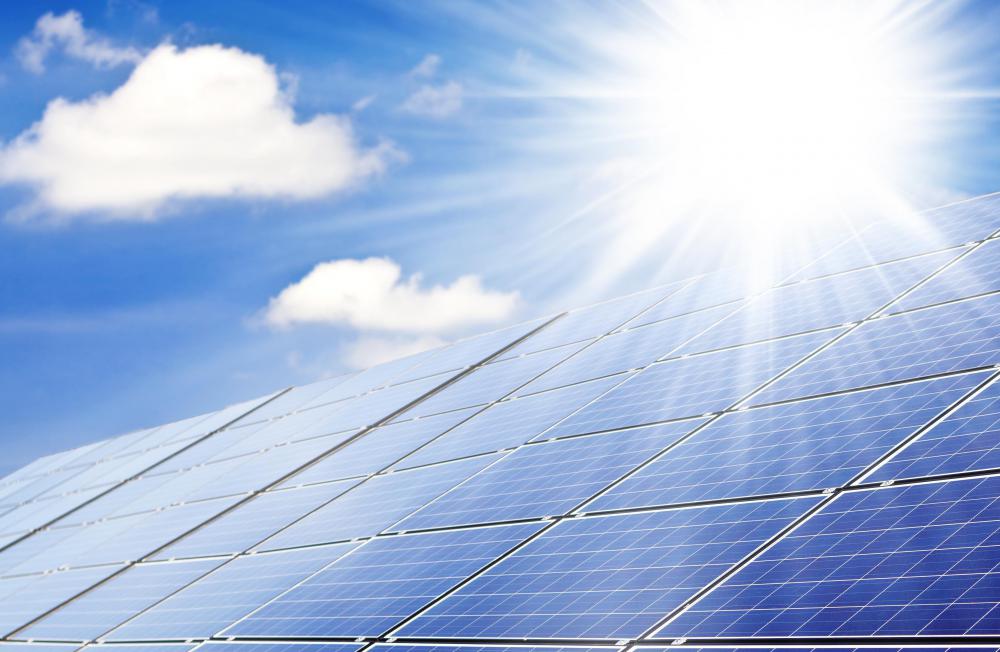At WiseGEEK, we're committed to delivering accurate, trustworthy information. Our expert-authored content is rigorously fact-checked and sourced from credible authorities. Discover how we uphold the highest standards in providing you with reliable knowledge.
What is a Green Bond?
A green bond is a type of tax-exempt municipal bond, issued by organizations and local governments that have been qualified by the U.S. Federal Government to do so. The idea behind a green bond is that it is issued to promote the development of so-called brownfield sites, which are buildings or parcels of land that are abandoned or under-developed, and may have small amounts of industrial pollution. The full name for a green bond is a Qualified Green Building and Sustainable Design Project Bond. Green bonds are meant to promote environmentally friendly land use and development.
Increasing awareness of environmental issues forms the background for the implementation of the green bond. They are intended to raise money that will support environmentally sensitive business practices and new ventures. These usually take the form of rebuilding or restoring land or buildings that have a negative environmental impact on a community, or have been polluted themselves and need restoration. The interest earned on such bonds is not taxable, in order to provide an incentive to purchase them, compared to ordinary bonds whose interest is taxed.

Only some developments or restoration projects will qualify to use green bonds. There are three main criteria used for this qualification, and a green bond issue can take place if any one of them is met. The first is that the building must have a footprint of at least 20 acres (8 hectares) or an interior area of 1 million square feet (92,000 square meters). The project may also qualify if it receives funding from a municipality or a state in the amount of $5 million US Dollars (USD) or more.
Failing either of these two, the project can still qualify if at least three fourths of the building is registered for certification through the Leadership in Energy and Environmental Design (LEED) system. LEED is a rating system that is based on standards for environmentally sustainable building projects. Buildings may also be required, under this system, to use renewable resources such as solar power for a portion of their energy requirements.
While environmentally-motivated investments are not new, the green bond is one of the first of these investments to offer a fixed rate of return. The first major building project to take advantage of green bonds was the Destiny USA retail complex in the state of New York. The Destiny USA project is also unique in that it is expected to have all of its energy needs met by renewable sources.
AS FEATURED ON:
AS FEATURED ON:











Discussion Comments
Although the bond maturity takes awhile, I think municipal bonds are a great, low risk investment. And I think I would prefer to invest in a green bond rather than any other kind.
I feel strongly about sustainability and environmental issues, and I don't agree with a lot of things big corporations do. Rather than investing in stock from some profitable company with questionable business practices, I think I'd rather invest my money in something I can actually believe in, like a green bond.
@starrynight - That's a cool anecdote and all, but I'm not sure if I'm sold on the whole idea of a green bond. I feel like it's just another way to be trendy and capitalize on the whole "green" thing that seems to be so popular these days.
I have to wonder how closely the building sites and the results of the developments are really monitored? Also, who decides what the standard is for an environmentally friendly development? It seems like there's just too much grey area here!
I think this is a great idea, a win-win situation for everyone involved. Good for the people who buy the bonds, good for the people who develop the land, and good for the people who live in the area.
I've witnessed first hand all the good things that can come from developing a slightly undesirable area. There is a spot on the water in my former city that was kind of undesirable for investors. However, a project developer took it on (I don't know if a green bond was involved, but I think it's possible) and developed a beautiful, environmentally friendly area.
The area looks great, and it really brought up the property values in the surrounding areas.
Post your comments